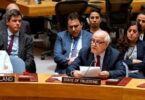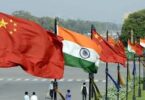Federal Cabinet approved creation of new division in the federal secretariat which would be named as “Social Protection and Poverty Alleviation Division.”It will be tasked to implement Ehsas programme for poverty alleviation. Initially Rs.80 billion will be earmarked and the total outlay will be increased to Rs. 120 billion by the year 2020. The major component of the programme include provision of loans to jobless youth for self employment and shelterless people fore construction of houses.
In Pakistan about 800 million people live below the poverty line for which major contributory factors are recessionary cycle which was caused by the nationalisation of private sector enterprises of early 70s, inefficient public sector enterprises, devouring Rs.1100 hundred billion annually, and economic policies of the past 10 years which resulted in galloping inflation and acute stagnation.
Contrary to the critique economic policies of the previous government by PTI financial wizard, the present government has not made appropriate changes in these polices comprising acquisition of high interest bearing commercial foreign and domestic loans, excessive deficit financing measure of printing new currency and irrational increases in the prices of energy inputs. Electricity tariff has been increased a number of times and another massive increase of Rs. 15 per unit may be announced in the closing month of the current fiscal year. Gas tariff has been jacked up by 141 percent per MMBTU and another increase of the same percentage is in the pipeline. Finance Minister Asad Omer has defended the recent increase of about Rs. 6 per litre in the prices of petroleum products although the slight increase in price of crude oil in the international market does not justify it.
The fiscal measures of the past eight months have resulted in a sharp rise in inflation rate to 9.41 percent which will push four million more people below the poverty line and will render one million more people jobless. This year 1.8 million young people will enter the job market. It is pertinent to mention that unemployment rate in Pakistan is directly proportional to poverty percentage as no social security net is available to the unemployed people on the pattern of western social democracies. If the ill-conceived and highly regressive fiscal measures continue a miracle can keep the inflation rate below double digit. The combined effect of high rate of inflation and slow down of economic growth to 3 percent will produce long term stagflation making the poverty situation even worse.
Previously, the International Monetary Fund (IMF) had provided soft loans of $ 1.3 billion for the implementation of Poverty Reduction and Growth facilitation Programme during 2002-07 which helped maintaining economic growth rate over 7 percent thus creating numerous job opportunities both in public and private sectors. However, high rate of interest on micro financing from domestic commercial banks did not produce the desired results in boosting self employments avenues. As a monetary policy tool, the successive upward revision of bank rate for combating inflation the interest rate on bank loans for self employment and construction of low cost houses may not be economical. It remains to be seen how far the Ehsas programme achieves the intended goals.






